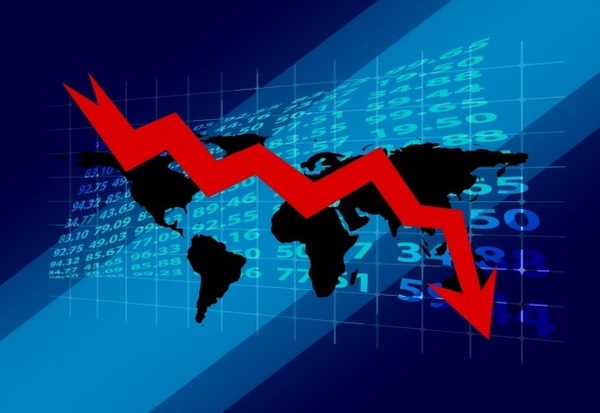
–>
August 17, 2022
On July 28, the Commerce Department announced that in the second quarter U.S. gross domestic product shrank by 0.9%. If that number isn’t revised upwards, it will mean that 2022 has been a year of negative growth. Two back-to-back quarters of negative growth, as we’ve now had, has long been considered the very definition of “recession.”
‘); googletag.cmd.push(function () { googletag.display(‘div-gpt-ad-1609268089992-0’); }); }
Preparing for the possibility of a second negative quarter of GDP with its negative implications for the midterm elections, Biden officials issued talking points to their minions that a recession is most definitely not two consecutive quarters of negative growth, but rather a complex combination of other factors that we proles needn’t concern ourselves with. However, “a recession by any other name” would smell as foul.
To be fair, maybe the classical definition of recession is a bit too simplistic. But it’s not as though GDP measures some discrete thing; GDP is whatever economists say it is. If they reconfigure GDP’s components, then its growth will be different.
The reason that the Bidenistas are so intent on redefining the word “recession” is because there is another economic indicator that cannot be redefined, and that’s “price inflation.” Though recession can be debated, the prices of energy and food can’t be; they are what they are, end of story. If a gallon of gasoline is $5, you won’t allow some pointy-headed policy wonk in D.C. to tell you different. That’s why the Democrats are so anxious to say we’re not in a recession, because having both inflation and recession going into an election smells too much like 1980.
‘); googletag.cmd.push(function () { googletag.display(‘div-gpt-ad-1609270365559-0’); }); }
Normal people might be a mite miffed at the Democrats for their infernal redefinitions. That’s because the Dems have been so consistently wrong lately about so many things that touch on the economy, especially their assurances that inflation would be transitory. Some analysts say that price inflation will be “sticky,” i.e. it will stick around for a while.
Recessions are officially dated by the National Bureau of Economic Research. Therefore, Biden can continue to deny that the U.S. is in a recession until the NBER chimes in, which, conveniently, won’t be until after the election.
The NBER may well side with Biden and rule that the U.S. was not in a recession during the first half of 2022. After all, it called the March-November period of 2001 a recession, despite its lack of two consecutive quarters of negative GDP. You see, the “Dot-Bomb [sic] Recession” of 2001 occurred under a new Republican president. And not only that, but the 2001 growth decline was only 0.3%, less than what we’ve had this year. One could be forgiven for wondering if the NBER has a bias.
Reminiscent of the stagflation of 40 years ago, Democrats are caught on the same sticky wicket of recession and inflation. But of these two, which is worse?
 If one has lost one’s job due to recession and is standing in a breadline, one might think that recession is surely the greater evil. But inflation hits everybody, including those who have managed to retain their job. Inflation is a cancer that can metastasize throughout an economy, and even destroy a nation’s currency.
If one has lost one’s job due to recession and is standing in a breadline, one might think that recession is surely the greater evil. But inflation hits everybody, including those who have managed to retain their job. Inflation is a cancer that can metastasize throughout an economy, and even destroy a nation’s currency.
If inflation is the greater evil, how do we deal with it while creating less pain for folks? To kill inflation, former Fed head Paul Volcker triggered two painful recessions by jacking up the federal funds interest rate to 20%. This writer knows of no one advocating such a stratospheric rate.
‘); googletag.cmd.push(function () { googletag.display(‘div-gpt-ad-1609268078422-0’); }); } if (publir_show_ads) { document.write(“
On July 28 at CNBC, economics professor Frederic Mishkin suggested that the Fed hike the funds rate to 4%. Mishkin didn’t explain why that number should be the target, but noted that it’s twice the Fed’s desired inflation rate of 2%.
Besides raising interest rates, there are two other ways to tackle inflation. The first is to attack inflation head-on by reducing the money supply, which the Fed does by reducing its balance sheet. We’re talking QT here, quantitative tightening, i.e. withdrawing money from the economy. The Fed hasn’t had much experience at QT nor has it been very good at it.
As this writer noted in July, the Fed acquired assets in the early days of the pandemic at a rate that is more than ten times faster than the rate it plans to reduce its balance sheet. Also, the Fed is unwinding its position passively, by letting securities mature and then run off. It’s called “portfolio runoff,” which means that the proceeds of maturing assets aren’t reinvested, they’re destroyed.
The Fed could be more aggressive in reducing its portfolio. If the Fed tries to control inflation with only interest rate hikes and passive portfolio runoff, we may be in for a more painful recession than is necessary. Given that, shouldn’t the Fed also reduce its balance sheet actively, by selling its assets prior to maturity? That way the Fed would be taking even more money out of the economy to fight inflation, and perhaps have less of a reason to raise interest rates to ruinous heights.
The second way to fight inflation is with the elective branches of government. Congress could end its excessive borrowing and spending, both of which contribute to rising prices. But with the passage of the Inflation Reduction Act, members of Congress seem to think that they can spend their way out of inflation. Indeed, Sen. Chuck Schumer once said that “the Fed is the only game in town.”
The president could help on the inflation front by reversing his disastrous policies on energy, but his handlers might not let him. So neither Congress nor the president are likely to deliver any relief. It seems the Fed really is the only game in town.
In combating inflation, Prof. Mishkin opined that the Fed needs to establish some “credibility,” as it had gotten “behind the curve,” and had been insufficiently “aggressive.” Correctamundo!
The Fed has been wrong and it’s been tardy. With an inflation rate of more than four times the 2% desired rate, the Fed can’t continue to pussyfoot around our inflation problem. To lessen the pain of recession, the Fed shouldn’t rely on passive portfolio runoff. The Fed also needs to actively sell the assets it bought with money it created. And, as with portfolio runoff, the Fed needs to destroy the proceeds of such sales. The Fed should rev up QT to soften the recession.
Recession is the price we pay for living beyond our means. Recession is a necessary corrective. Since the 2008 financial crisis, the federal government has borrowed, printed, and spent trillions of dollars to prop up the economy and asset prices. It needs to end.
If we want to kill inflation, rather than deny that we’re in recession, we should embrace recession, painful though it be. We must disabuse ourselves of the idea that we can continue running trillion-dollar deficits and printing a trillion dollars of new money in a single month.
Normal people should resent the Dems for their transparent attempt to control them by controlling the language and redefining inconvenient terms. They tell us that the invasion at the southern border is not an invasion and that the raid on President Trump’s home was not a raid. Who are these mental defectives trying to take over the mother tongue? If we allow them, the Left may even try to redefine “redefinition.”
Jon N. Hall of ULTRACON OPINION is a programmer from Kansas City.
Image: Public Domain Pictures
<!– if(page_width_onload <= 479) { document.write("
“); googletag.cmd.push(function() { googletag.display(‘div-gpt-ad-1345489840937-4’); }); } –> If you experience technical problems, please write to [email protected]
FOLLOW US ON
<!–
–>
<!– _qoptions={ qacct:”p-9bKF-NgTuSFM6″ }; ![]() –> <!—-> <!– var addthis_share = { email_template: “new_template” } –>
–> <!—-> <!– var addthis_share = { email_template: “new_template” } –>





